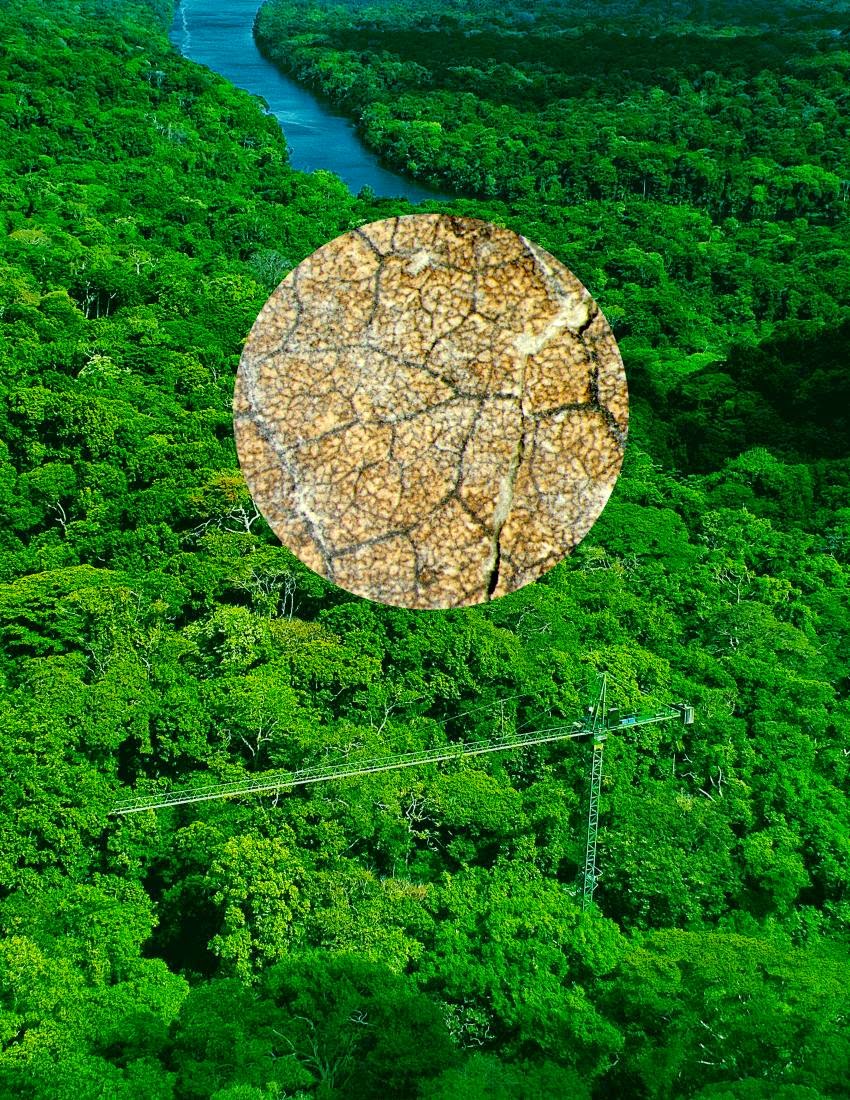
Most plant fossils are isolated organs, making it difficult to reconstruct the type of plant life or its ecosystem structure. In their study for GEOLOGY, published online on 28 Aug. 2014, researchers Camilla Crifò and colleagues used leaf vein density, a trait visible on leaf compression fossils, to document the occurrence of stratified forests with a canopy dominated by flowering plants.
Using a 40-meter-tall canopy crane equipped with a gondola, they were able to collect leaves from the very top of trees in Panama and the United States. They measured leaf vein density in 132 species from two Panamanian tropical forests and one temperate forest in Maryland (USA). The team also compared the leaf vein values of canopy-top and forest-bottom leaves (i.e., leaf litter on the forest floor).
The authors show that venation density, like plant metabolism (i.e., transpiration and photosynthesis), is higher in the leaves located in the forest canopy and decreases in leaves at lower levels. Furthermore, they found that leaves from the forest floor, which are the closest analog to fossil floras, preserve this pattern.
The team also reanalyzed vein density data from the literature from the Early Cretaceous (132.5 million years ago) to the Paleocene (58 million years ago) to determine when flowering plants became part of the upper forest canopy. Vein density values similar to present ones appeared about 58 million years ago, indicating that the emergence of flowering plants in the canopy occurred by the Paleocene.
More information:
Variations in angiosperm leaf vein density have implications for interpreting life form in the fossil record, Camilla Crifò et al., Published online on 28 Aug. 2014; dx.doi.org/10.1130/G35828.1
Note : The above story is based on materials provided by Geological Society of America










